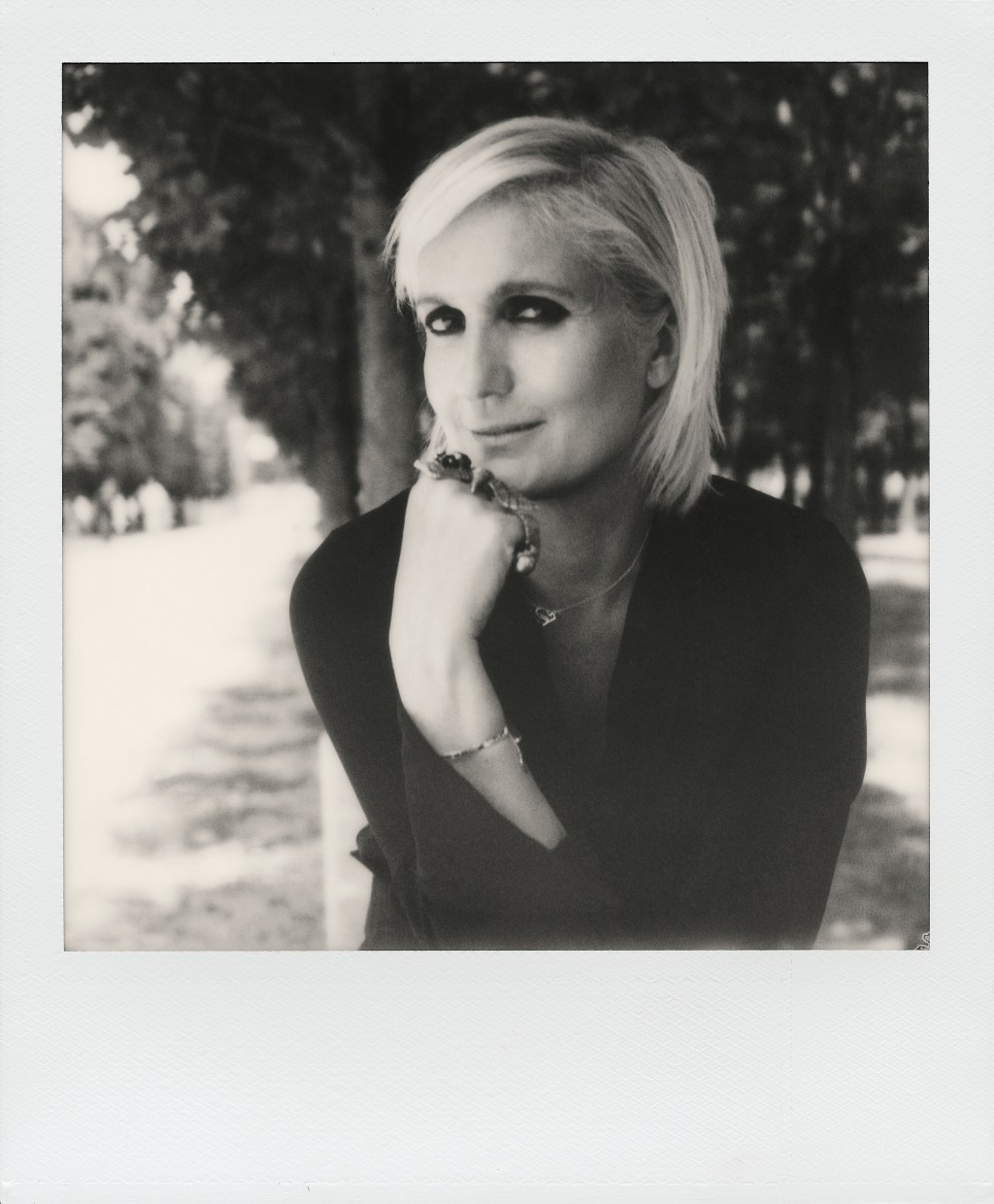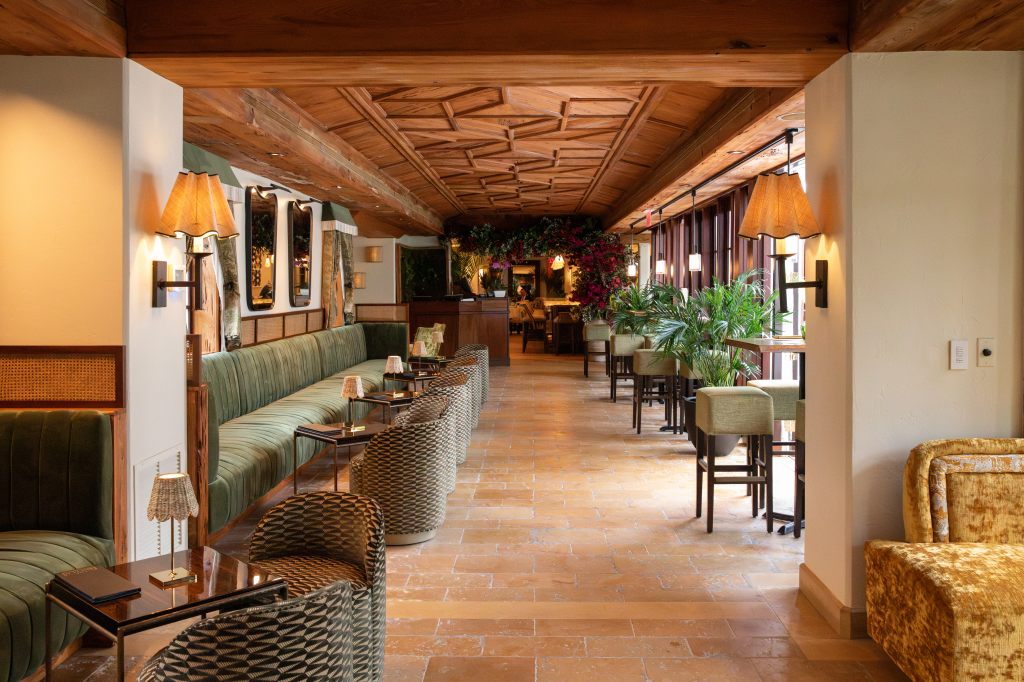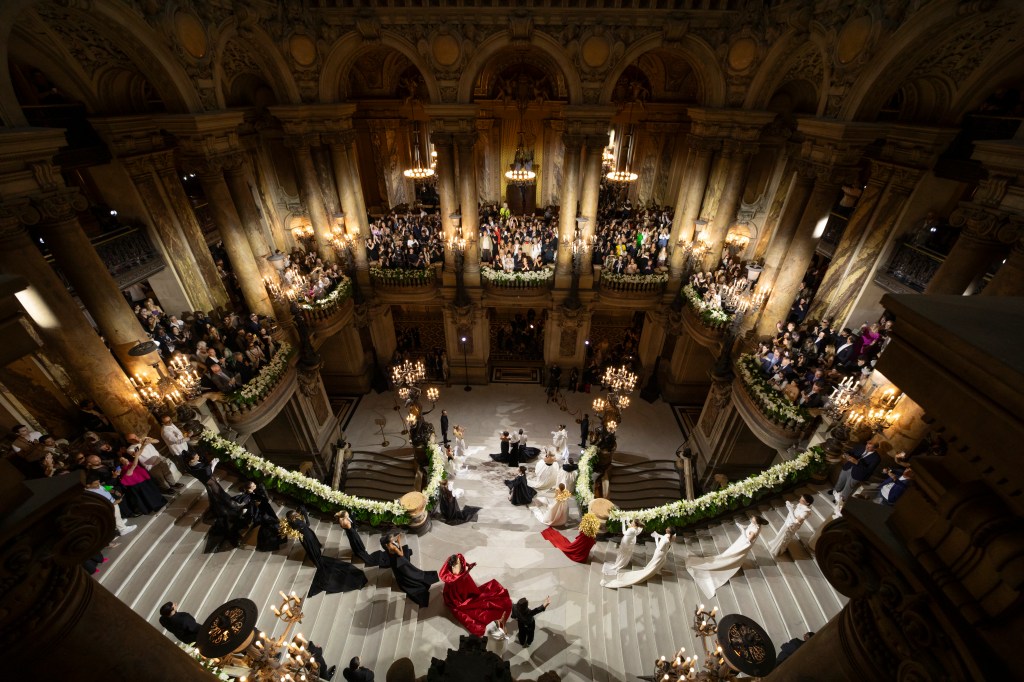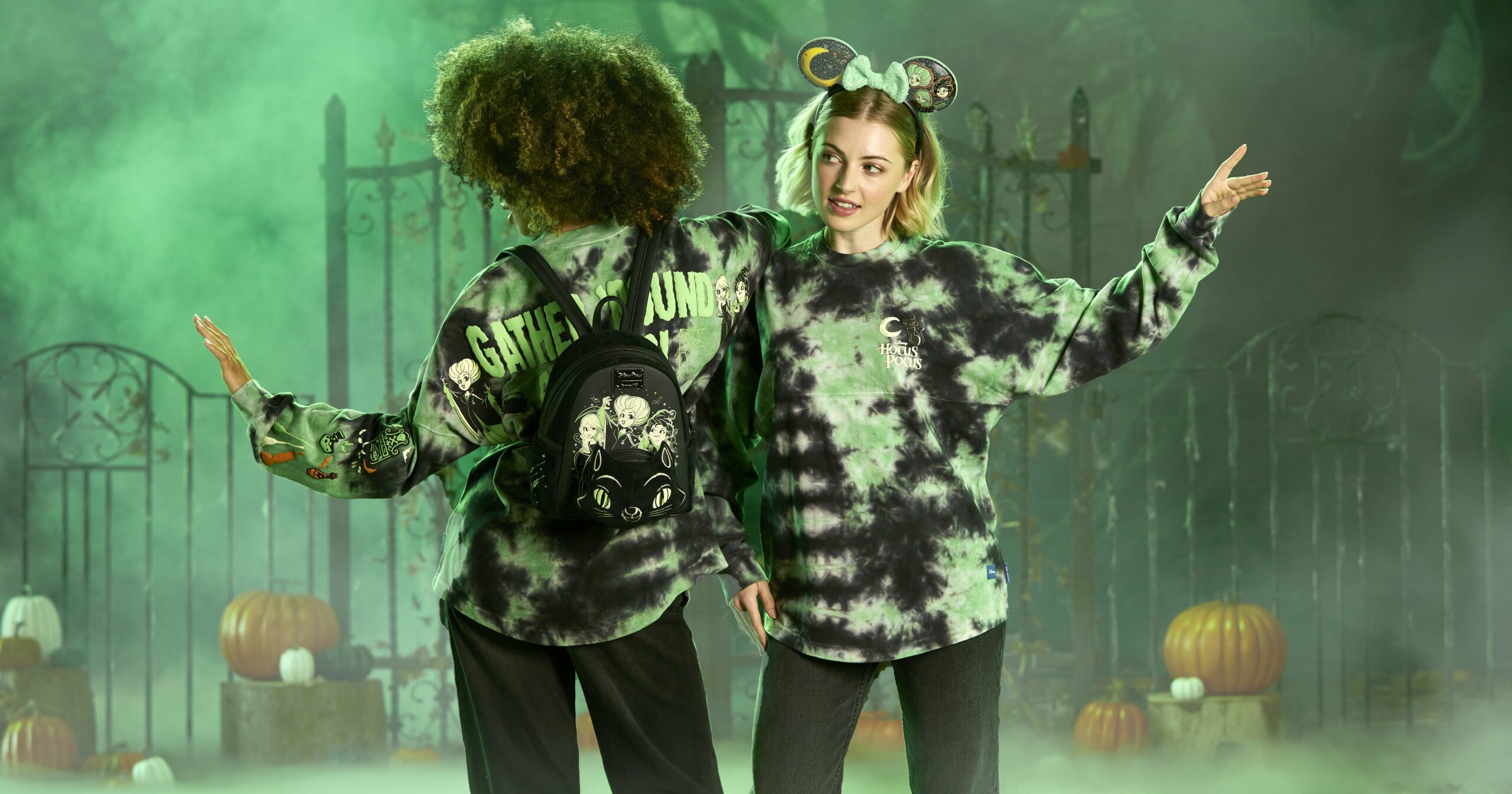PARIS — For Maria Grazia Chiuri, success is nothing without sisterhood.
When she took over as creative director of womenswear at Dior in 2016, the Italian designer was flying solo for the first time after a fruitful creative partnership with Pierpaolo Piccioli, first at Fendi, then at Valentino.
But she quickly surrounded herself with a new cadre of collaborators, corralling female writers, artists, choreographers and photographers to amplify her collections, built around strong brand signatures such as the Bar jacket, pleated tulle skirts and hit accessories like the Book Tote bag.
“I really work all the time on the relationship between the Dior codes and women’s bodies, how to put these elements in dialogue,” she tells WWD.
It has proved a successful strategy, with Chiuri helming the brand through a golden age that saw the business triple in size in less than seven years, according to parent company LVMH Moët Hennessy Louis Vuitton. This year alone, she has staged blockbuster shows in Mumbai and Mexico City, alongside her regular ready-to-wear and couture collections in Paris.
For all her outstanding work, WWD will present her with its John B. Fairchild Honor at an awards ceremony in New York City on Tuesday night.
“When I arrived at Dior, I understood that Dior is a big platform and immediately I wanted to share this space with other artists,” Chiuri explains in an interview in her office in Paris, which looks more like a library than a design studio.

“This important position gives me the opportunity to create a community,” she continues.
“It’s all the work that there is with the different artists that gives me interest to create the collection and inspires me during the process,” she says. “I think it’s the most interesting part of my job.”
While collaborations are nothing new for the fashion industry, Chiuri has raised the bar on creative partnerships by giving feminist artists the kind of stage they are often denied by the art establishment.
Take Judy Chicago. The U.S. artist is the subject of a show at the New Museum in New York City, sponsored by Dior. Titled “Herstory,” it provides a broad overview of her work and includes some of the embroidered banners that Chicago created for Dior’s spring 2020 haute couture show.
That display took place in the garden of the Rodin Museum in Paris inside an installation representing a reclining goddess figure. The tent — 300 feet long, 65 feet high and 50 feet wide — was originally designed in the ‘70s but never produced.
“It’s been the greatest creative opportunity of my life, and to be able to say that at 80 and to be able to make art at this scale, it’s fabulous,” Chicago told WWD at the time.

Chiuri says she loves to use her show sets like an art space — something that links her to the house’s founder, Christian Dior, who began his career as a gallerist exhibiting works by avant-garde artists such as Salvador Dalí and Max Ernst. But she notes that many female artists are intimidated by the scale of such a stage.
“Judy Chicago probably is the only one that wanted to create a big space but women artists, especially feminist women artists, they always found it uncomfortable to create something that is monumental,” she notes.
“It’s not easy. It’s like using your voice really loudly and I think it’s important to push women to use their voice,” Chiuri continues. “Women sometimes are scared to take their space. They think it’s not appropriate.”
The brand does not impose any limits on participating artists, which has resulted in some memorable moments, like the fall 2020 show where LVMH chairman and chief executive officer Bernard Arnault, one of the world’s richest men, sat surrounded by neon signs sign spelling out “Patriarchy = Repression” and “We Are All Clitoridian Women” — the work of feminist art collective Claire Fontaine.
“We leave the artists free to realize their art work with their language,” says Chiuri, underlining that she was transparent about her intentions in her initial meetings with Arnault and Sidney Toledano, then-CEO of the house, who named her as the first female couturier in the history of the company founded in 1947.
“They were both immediately in agreement with my point of view, because you can’t do that if you are not clear immediately on what is your point of view or your values. I don’t think it’s possible,” she says.

“And there was a shocked reaction, and that helped me also to understand how important it was to continue to speak about that, because I think the stereotypical idea that the creativity is more with genius male artists is very strong even today,” says Chiuri, who now works with a female CEO, Delphine Arnault.
The designer set the tone from her debut show, which famously featured a T-shirt emblazoned with “We Should All Be Feminists,” the title of an essay by Nigerian author Chimamanda Ngozi Adichie.
From the beginning, Chiuri has been the target of critics who have skimmed over the political messages of her shows and dismissed her efforts to create wearable wardrobe options for women as bland commercialism.
“In some way, it was like not recognizing that I have worked in fashion since I was 20 years old for many different companies,” she says, noting that she started out with the five Fendi sisters, and later worked alongside Valentino Garavani and his partner Giancarlo Giammetti.
“I think these kinds of people are not stupid [enough] to give me important roles inside the company if I was not talented,” she says. Indeed, Chiuri has a reputation as a hitmaker, responsible for the hugely successful Baguette bag at Fendi and the Rockstud pump at Valentino.
“Today, I think that we are doing well at Dior and they immediately think that you are commercial. If a male creative director is doing well, it’s because he understands the spirit of the time. I think there is this kind of a double standard. It’s very strong, but probably because I’m just a little bit an outsider in some way,” she says with a shrug.

Chiuri is married to Paolo Regini, who runs his own clothing line making handmade shirts in Rome, and is mother to a son, Niccolò, and daughter, Rachele, who works with her as cultural adviser in the creative department at Dior.
“A female designer with two kids who is also married is completely uncool,” Chiuri says ironically. “You have to be very strange, to take drugs, to arrive late, to be desperate, not to be happy.”
She sees strong parallels between the fashion industry and the art world. The hurdles arise on several fronts, from women struggling to transcend their status as potential childbearers, to the way observers judge female creativity outside the home.
“The men create pieces of art; the women can create babies. This is a very patriarchal idea,” Chiuri says.
“Immediately, if you are a woman, they think that you have to create a dress for yourself, or you are a better creative only because you know what it means to have a female body. It’s full, full, full of stereotypical ideas. It’s very hard and honestly, it doesn’t come only from men. Women too create their limits because a lot of women believe in it, too,” she says.
Chiuri might devour academic texts, but she believes that ultimately, the product does the talking. She’s conscious that while artists fuel her imagination, the end consumer may be oblivious to the concepts embedded in her collections. “In the end, we have to transform these narratives into images, because fashion is visual,” she reasons.

Still, she’s confident that Dior’s clientele is sensitive to the amount of research that goes into its products.
“I’ll give you an example. The Book Tote, I think, is the most simple bag apparently that you can see, but it’s not so simple. It’s a very complex bag to realize. It’s mechanical embroidery. It was an incredible product that I did with my studio and it was really difficult,” she recalls.
“It comes from my love for embroidery and my idea to…produce only the parts that you need to create the bag, so you don’t have to cut and throw away other materials,” she explains. “It’s a very couture way to create bags because you can really personalize it and create a design only for one person.”
Creating powerful signatures is at the heart of her approach.
“This is my obsession, also in the past in the other brands where I worked: to create some elements that can become icons and recognizable for the brand that are not only the logo,” she says, citing the shape of the Bar jacket, or the toile de Jouy that she has made a brand signifier.
“To create pieces that are timeless, this is the dream of all designers, I think. It’s not easy, but I want to build a little chapter of this big history of Dior and to create in this little chapter some elements that can stay for a long time,” she adds.

The day of the interview, she spent several hours with Bernard Arnault poring over her spring 2024 collection in the showroom.
“At Dior, he is looking at each single piece. He wants to see all the collections,” she reports, saying that Arnault is fascinated by craftsmanship and asks detailed questions about fabrication techniques.
“Fashion is image, it’s communication, it’s a brand, but in the end, you’re buying a product, so he’s interested especially in the quality,” she explains. “It was fun because we have very often the same ideas, especially about accessories.”
Chiuri draws inspiration from the archive not only of Dior himself, who headed the house for a decade until his untimely death in 1957, but also successive creative directors such as Yves Saint Laurent, Marc Bohan and John Galliano.
“From the beginning, I said that I want to be like a curator for the brand,” she says. “The history of Dior is huge. So, when we speak about what is the imaginary of Dior, what is the reference of the archive, we have to understand also what part of the archive? Mr. Dior did the company and did the codes at a very specific time after the Second World War.”
She notes that with his voluminous New Look, which controversially required acres of fabric, Dior sought to “give a body to women that were without bodies,” having suffered the deprivation of wartime rationing.
“But if you see Bohan, it’s a completely different time. We are speaking about the ’70s, the liberation of women. The silhouettes are completely different,” she continues.

While her couture creations lean toward Dior’s architectural style, her ready-to-wear embraces the pragmatism of Bohan’s approach. Chiuri has expanded the brand’s offerings in sportswear, athleisure and knitwear.
“It’s very important to create things that are very flexible and that different kinds of bodies can wear. If they are not so flexible, it’s not real prêt-à-porter,” she says.
She believes that being Italian allowed her to approach Dior more freely, since she had little understanding of how deeply the house is interwoven with the history of France.
“Probably, I was less stressed by the heritage,” says Chiuri, who in 2019 was awarded the Legion of Honor, France’s highest civilian distinction. “My first approach was to think about Dior like a brand — probably my approach was too simple, and I saw also the reaction, that not everybody understood why I was not so [reverential].”
Creating bridges with other cultures has been key. Chiuri has used her resort shows, in locations including Marrakech, Athens and Mexico City, to showcase the creativity of local artists and artisans, and established a long-term partnership with the Chanyaka embroidery workshop and school in Mumbai.
“It was a shock for me to find this little book in the archive that explained how Dior immediately was a worldwide brand, and there was this kind of map with the different locations around the world, but also in South America, in areas that were really faraway for the time, when it was not normal to fly,” she recalls.

While destination shows were suspended during the coronavirus pandemic, Dior never really stopped, showing its cruise collection in Lecce, Italy, in July 2020, albeit without guests. Since then the traveling fashion circus has returned with a vengeance, to the dismay of environmental campaigners, but Chiuri is unapologetic.
“It’s very strange to think that you can do fashion without doing shows, because at the end of the day, fashion is a performing art,” she begins.
“The second aspect is that these shows around the world help the brand to be in contact with the local clients. This is a more commercial aspect, and especially if you are a global brand, because you can’t invite all the clients to Paris during fashion week,” she continues.
“It helped me also to understand how much we are connected [through] craft with other countries, especially at a time where we are speaking so much about cultural appropriation,” she muses. “The problem, I think, is that we have an idea that fashion is about brands, but fashion is not only about the brands.”
She notes that in the ‘50s, Dior outfits were produced under license in countries including Morocco, the U.S. and Australia, with the designer adapting his patterns to local clients’ body types and lifestyles.

“Probably we have this idea of the Dior silhouette that comes more from the pictures that were done, less from the real collection. Because in the pictures, they wanted to emphasize the sculptural body, but we must not forget that all the photographers were men, and American men,” she says, referring to famous images by the likes of Richard Avedon and Irving Penn.
“Sometimes I think that the image, the narrative, create an idea of the work of the designer more than the real clothes. It’s mythologized,” she says. “In the end, Mr. Dior was really creating clothes that want to take care of women.”
Chiuri works only with female photographers, another facet that distinguishes her from other designers.
“In the fashion world, all the people that shoot the campaigns are men. I know this industry very well. The photographers are always the same. Nobody criticizes this aspect. When I started to shoot with women photographers, people would say there are no women photographers,” she says with an incredulous laugh.
It turns out there are a book’s worth. “Her Dior: Maria Grazia Chiuri’s New Voice,” a 240-page tome published in 2021, features 33 photographers who have worked with the brand, from regular collaborator Brigitte Niedermair to Nan Goldin, Katerina Jebb, Brigitte Lacombe, Sarah Moon and Harley Weir.

Despite her progressive views, Chiuri has caught her share of flak from “woke” observers. She’s been called out for not using plus-size models in her shows, or for featuring an all-white cast in the short film she made with director Matteo Garrone at the height of the pandemic. It’s nothing she hasn’t heard before, she says.
“Honestly, the hardest criticisms are the ones that I have received at home,” she says. “They really go straight to the point.”
She explains it by the fact that work and family have always been intermingled: her seamstress mother worked from home, her husband has a workshop beneath their residence in Rome and her children have grown up around fashion. “Work is inside our family, probably in a way that is just a little bit strange,“ she admits. “Rachele was only two months old when she went with me to the handbag factory.”
Her daughter, who specialized in gender, art, media and culture studies at Goldsmiths University in London, is now a constant presence at her side. “For me, to work with her in some ways is simple. In other ways it’s difficult because she criticizes me, of course, a lot,” Chiuri says.
“I also make your life much easier,” Rachele pipes up in protest.
“When she went to London, she was very critical of the fashion world and the fashion industry, in a very, very strong way. But it was good because it helped me to understand more about the criticism,” says Chiuri, adding that she addresses problems whenever possible. “We do our best. I don’t think that there is a solution, because we are speaking about a system, but we can work in a way that could be just a little bit better.”
Perhaps those spirited family discussions are the secret to Chiuri’s continued success. After all, she says ruefully, “There is no risk of believing that you’re a genius.”



